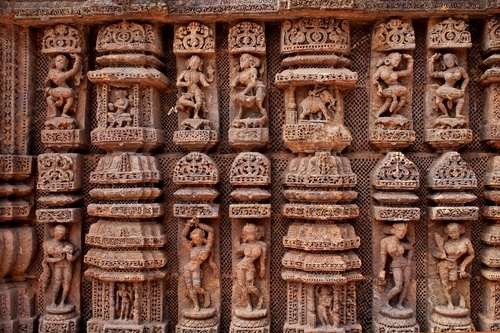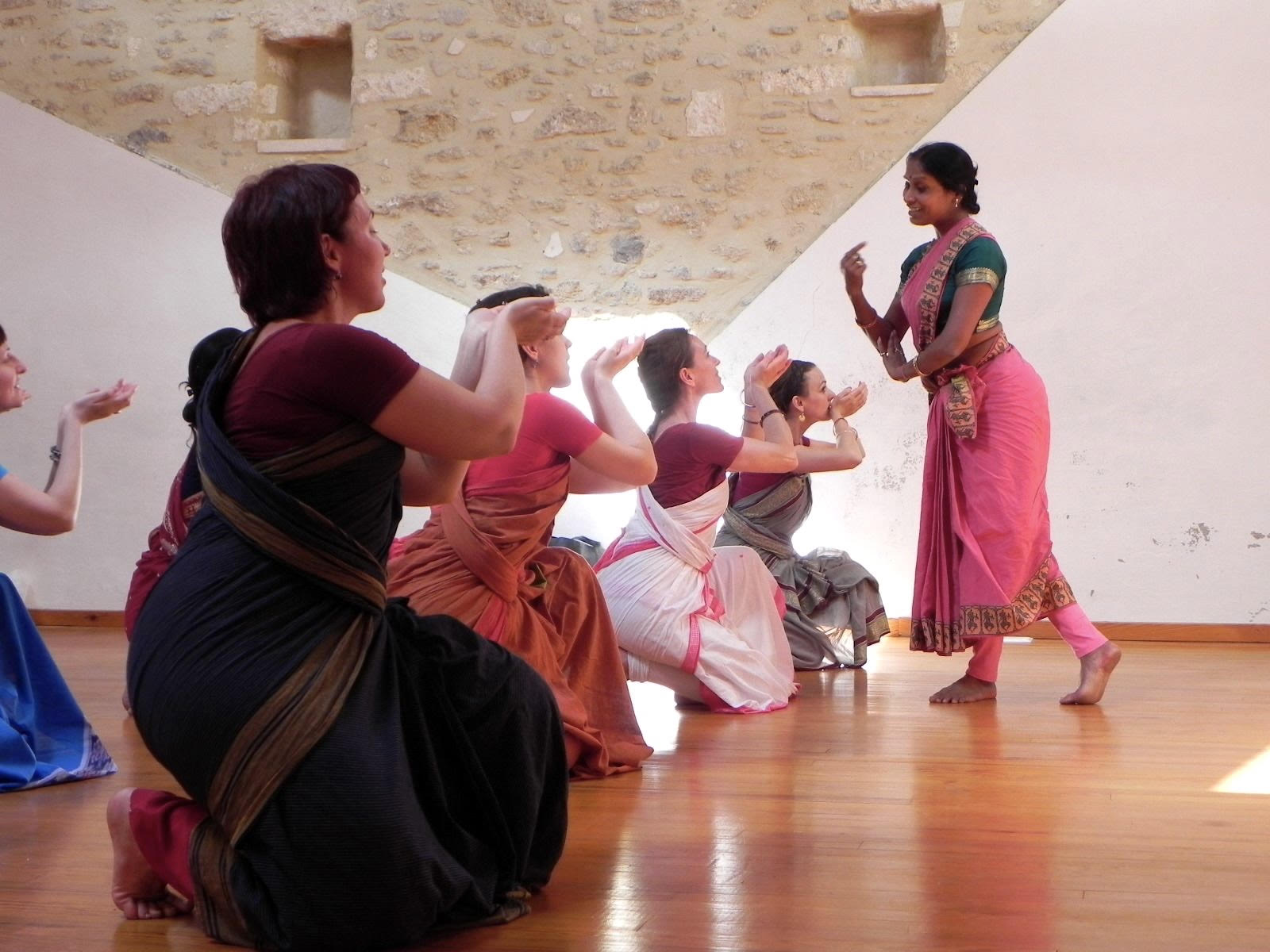About Odissi
“Odissi is a devotional, classical dance form where you get Bhakti Bhava.”
– Sujata Mohapatra

Odissi dance is in the heart of the temples in Jagannath Puri, India and the hearts of Jagannatha bhakta’s all throughout the world.
Through each movement, a story is told with Nritya, a combination of facial expressions, oppositional eye and torso movements, mudras (hand gestures) and various postures inspired by the sacred temple sculptures.
Originally it was only danced as a ritual offering within the inner sanctums of these temples by the servants of the Lord, deva dasi’s also known as Mahari’s. Since the women danced exclusively for the Deity of Lord Jagannatha another group of dancers formed who were called GotiPua. These dancers would perform in outside the Jagannatha temple in front of the King’s court for entertainment for the public. Goti means single and pua means boy. These young boys would dress and perform as the deva dasi’s for the public to witness the sacred dance for Lord Jagannatha, while honoring the sanctity of the Mahari’s sacred dances for Lord Jagannatha.

Since the British Invaded India these traditional temple dancers stopped performing in the temple exclusively. Fortunately the dedication and devotion of a small group of devotional stalwarts who comprehensively dedicated their lives and all their energies, revived and classicalized Odissi dance. Guru Pankaj Charan Das, Guru Debaprasad Das and the most universally admired Guru Kelucharan Mohapatra. Each of them had extensive knowledge in classical Indian dance and traditional Indian music. They used their intelligence and devotion to transform the sacred temple dance into one of the 8 principal classical dances of India, next to Bharatanatyam, Kathak, Kuchipudi, Kathakali, Sattriya, Manipuri and Mohiniyattam.
Guru Kelucharan Mohapatra, along with a few illustrious disciples like Sanjukta Panigrahi, Minati Mishra, Sonal Mansingh, Kumkum Mohanty, Madhavi Mudgal and Sujata Mohapatra have restored Odissi and established it as the crested ornament among the Indian classical dances worldwide.
There are two main postures of Odissi. Chowka the square position of Lord Jagannatha and Tribhangi the three fold bending form of Lord Sri Krishna. Each posture portrays the feminine and masculine energies of the Lord, respectively. The rest of the foundational positions closely replicate poses found in famous sculptures in the temples of India, especially Orissa situated at Puri, Konark and Bhubaneswara.

The Odissi dance repertoire begins with ten basic steppings of Chowka and ten in Tribhangi. Both are accompanied with the ending Tihai, series of different steppings to elongated beats to complete the steppings. Afterward the dancer will learn the standard Odissi dance.
- Mangalacharan – the dancers offering to Lord Jagannath and prayer to Sri Ganesh to remove obstacles on the dancers path of devotion through dance.
- Battu- Batu Nritya is a pure dance offering in honour of Lord Batukesvara Bhairava, one of the 64 aspects of Lord Shiva. The dancer shows the sculpturesque poses of the apsaras holding the instruments used in the Odissi music accompaniments such as Veena, flute, mardala and manjira (cymbals).
- Pallavi- the Pallavi is an elaboration on pure dance. The Pallavi gradually unfolds the particular Raga upon which it is based on to create a beautiful tapestry of rhythm, music and movement.
- Abhinaya- the depiction of deep emotions expressed in a lyrical expressions of each emotion starting with Nava Rasa or 9 emotions. – These Nine main emotions are love (shringara), laughter (hasya), kind-heartedness or compassion (karuna), anger (roudra), courage (veera), fear (bhayanaka), disgust (bhibhatsya), wonder or surprise (adbhutha) and peace or tranquility (shantha).
- Moksha- the beginning of the dancers liberation through the dance and surrender to God. After the dancer learns these items there are several more choreographies to continue learning and performing. Guru Kelucharan himself is accredited to have composed over 100 dances himself. Odissi has a vast world of compositions that a dedicated dancer and disciple can learn.

Today Odissi dancers around the world practice this sacred art form and preserve its divine origins by creating a sacred offering to the Lord in their personal practice and on stage.
